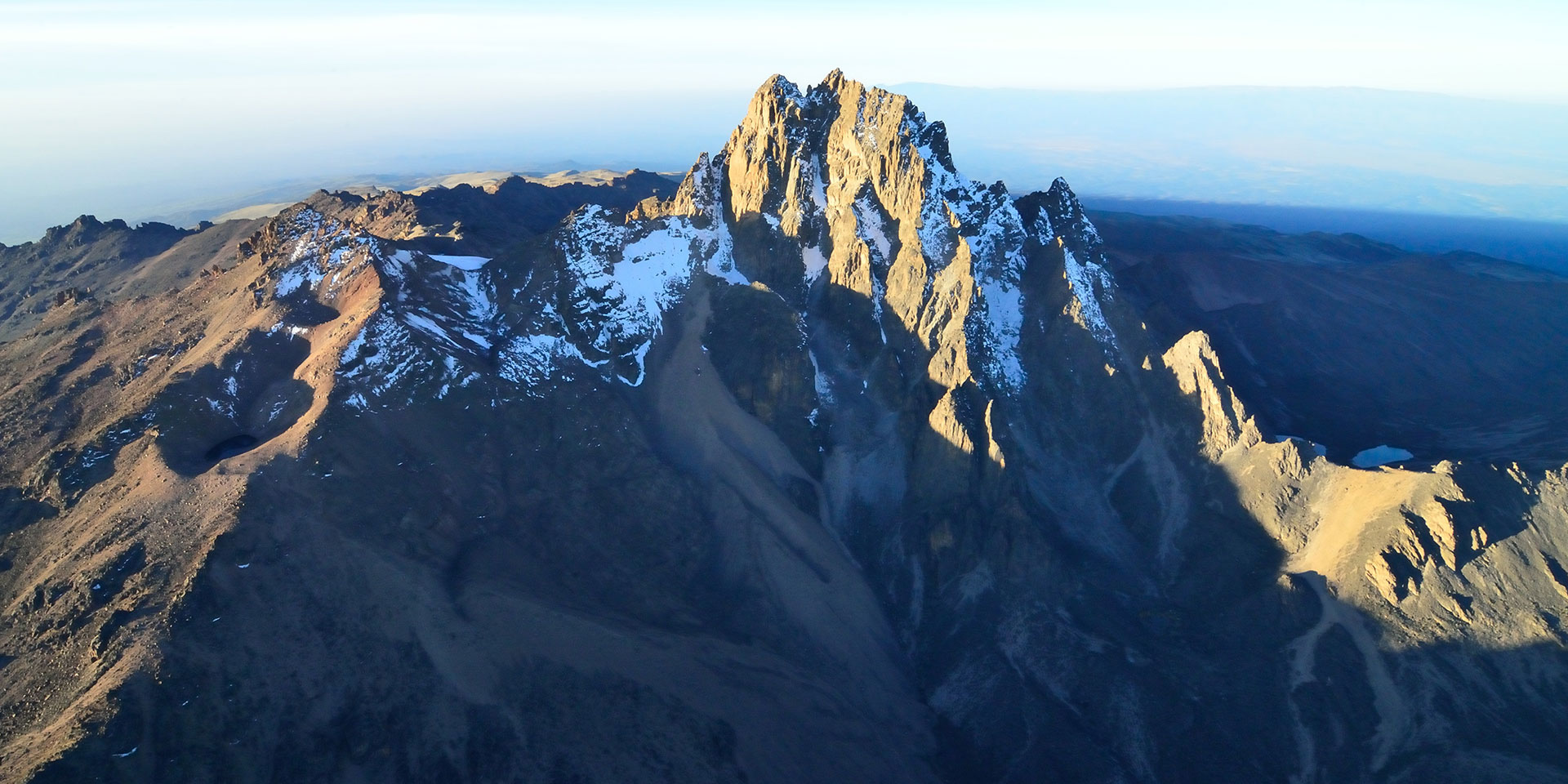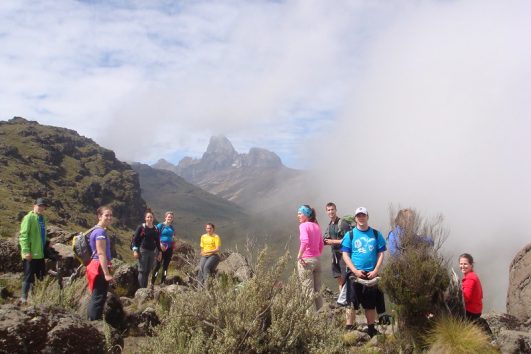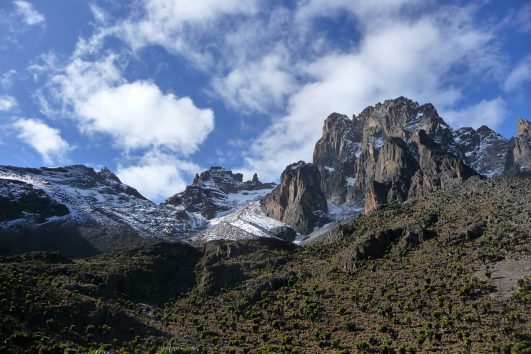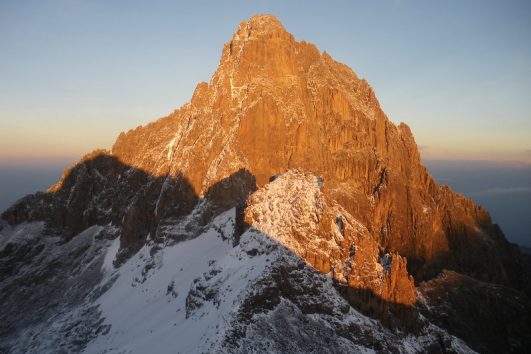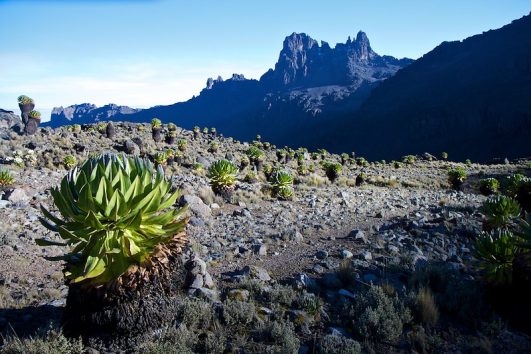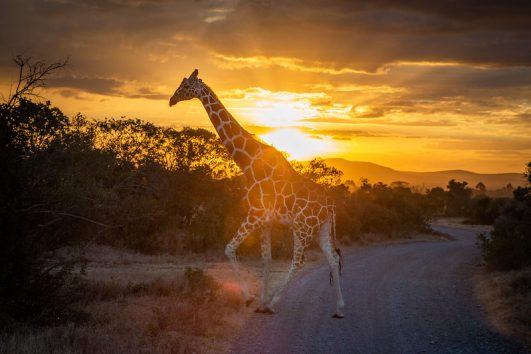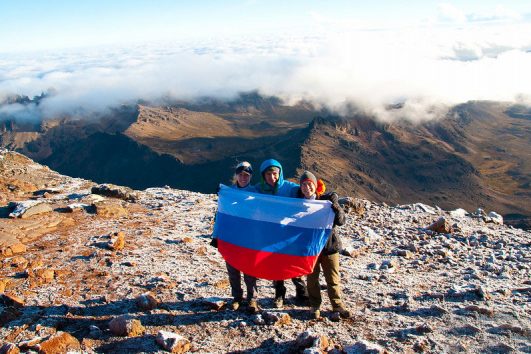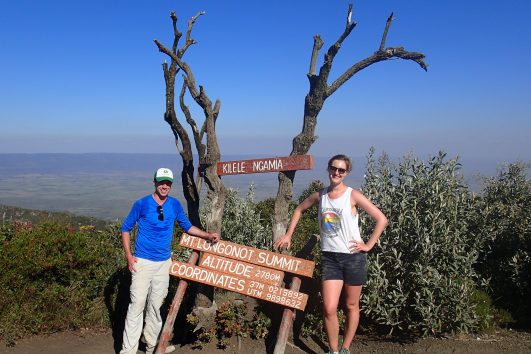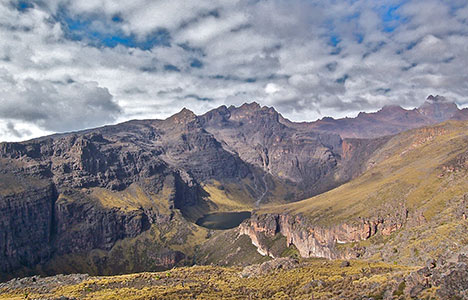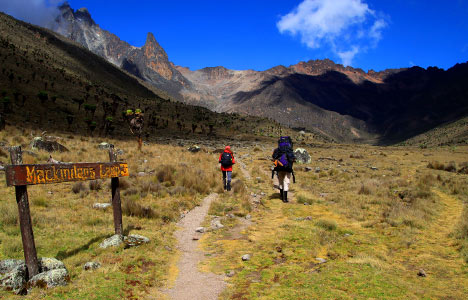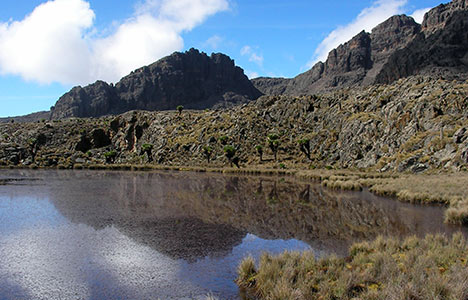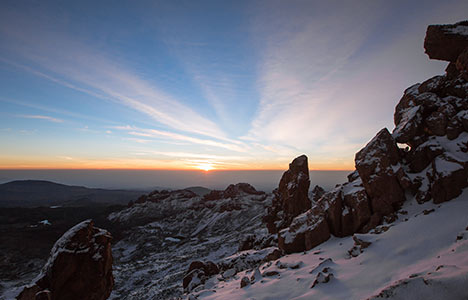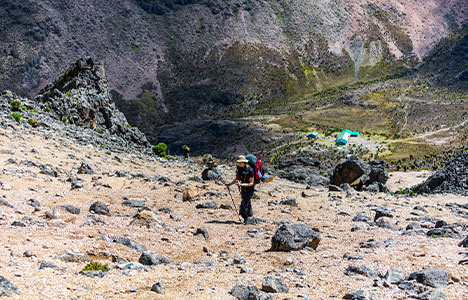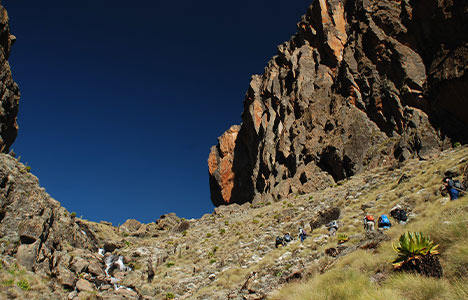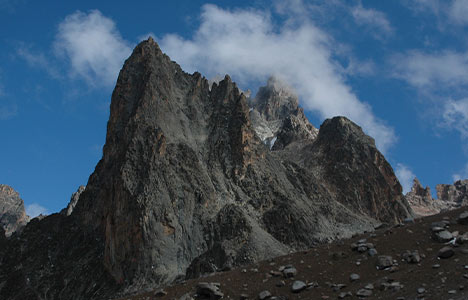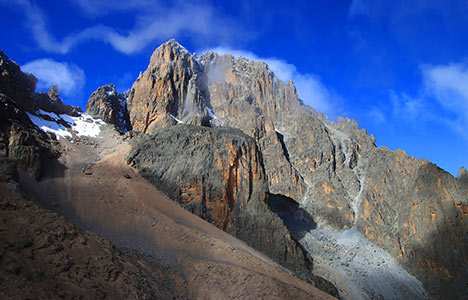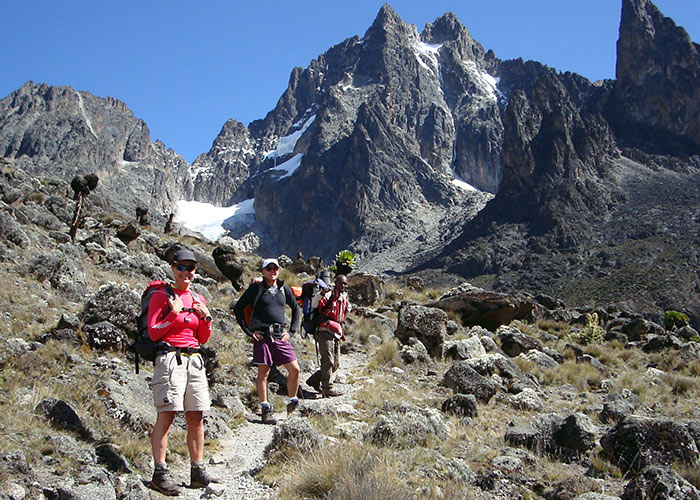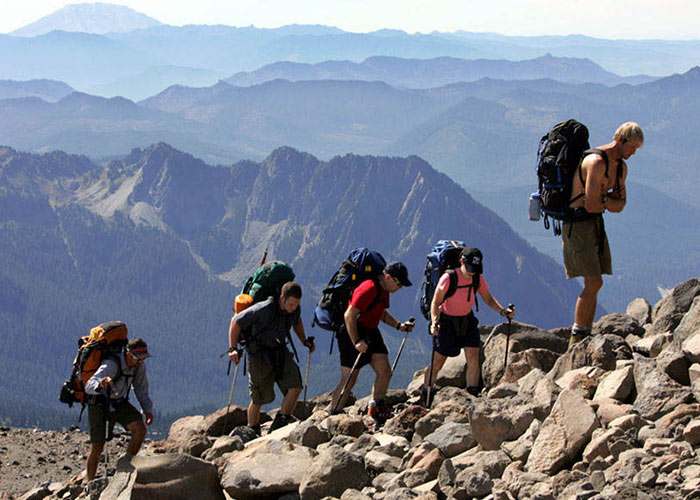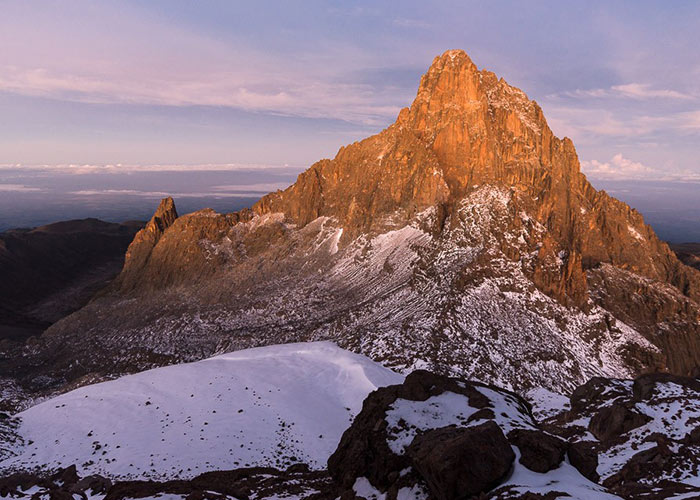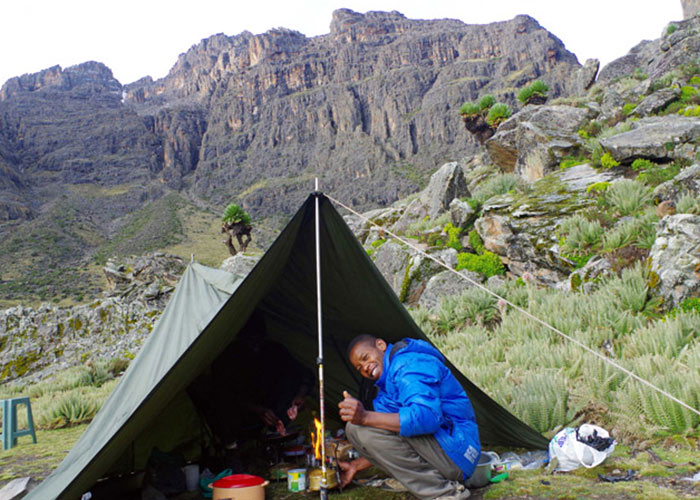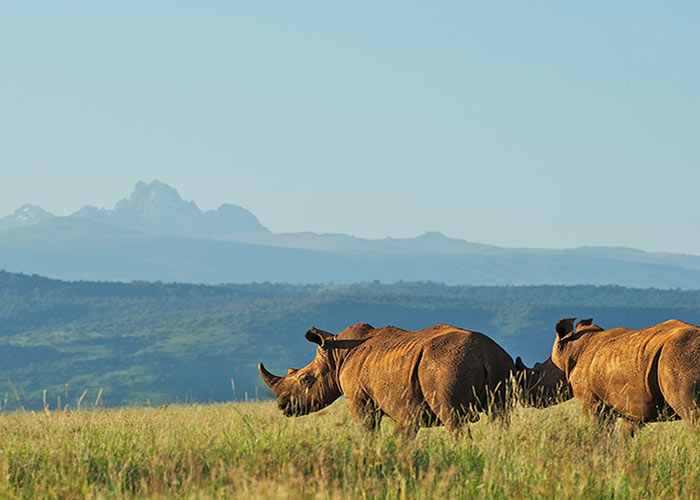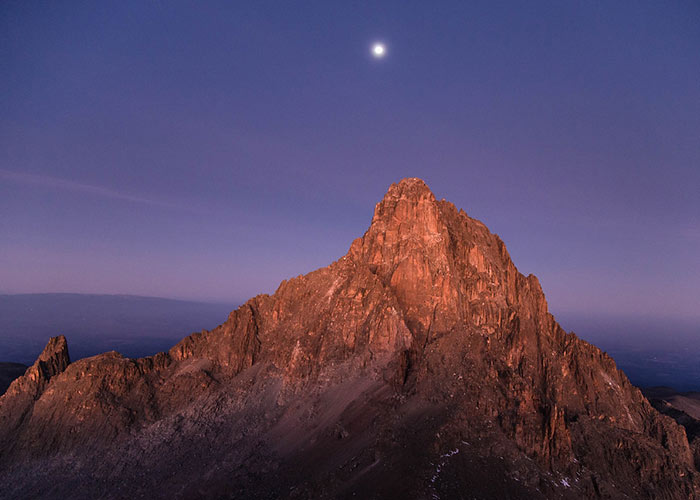Mount Kenya peaks consist of three main distinctive volcanic cones at the summit, namely, Batian, Nelion, and Point Lenana, all of them graced with glaciers at the crown.
Nearly all of Mount Kenya’s summits have volcanic origins. The majority of the peaks are situated close to the mountain’s center. These summits are rugged, giving them an Alpine aspect. The tallest peaks and gendarmes are typically found in Alpine terrain where ridges meet. Only a few mosses, lichens, and tiny alpine plants may be found growing in the rock cracks of the middle summits. The volcanic plugs farther from the core summits are coated in volcanic ash and soils. These summits have typical vegetation for their band of vegetation.
Batian (5,199 meters or 17,057 feet), Nelion (5,188 m or 17,021 feet), and Pt. Lenana are the tallest summits (4,985 m or 16,355 ft). The distance separating Batian and Nelion, the Gate of the Mists gap, is just 250 meters (270 yards) (5,144 metres or 16,877 ft). The next highest peak is Coryndon Peak (4,960 m or 16,273 ft), however, unlike the summits before it, it is not a part of the central plug.
Pt. Piggot (4,957 meters or 16,263 feet), Pt. Dutton (4,885 meters or 16,027 feet), Pt. John (4,883 meters or 16,020 feet), Pt. John Minor (4,875 meters or 15,994 feet), Krapf Rognon (4,800 meters or 15,748 feet), Pt. Peter (4,757 meters or 15,607 feet), Pt. Slade (4,750 meters or 15,584 feet), and Midget Peak (4,700 m or 15,420 ft). These all feature steep pyramidal shapes.
Terere (4,714 m or 15,466 ft) and Sendeyo (4,704 m or 15,433 ft), which form a pair of twin peaks to the north of the main plug, are two notable rugged outlying summits. They combine to create a large parasitic plug.
The Hat (4,639 m or 15,220 ft), Delamere Peak, Macmillan Peak, and Rotundu are a few further noteworthy summits.
Between the base and the top, there are many belts of vegetation.
Different kinds of woodland cover the lower slopes. The huge lobelias, senecios, and a distinct variant of the rock hyrax are just a few of the many alpine species that are unique to Mount Kenya.
Mount Kenya’s Main Summits
Batian, Nelion, and Point Lenana are the three peaks that makeup Mount Kenya, and each one is distinct in height. Although there are other peaks, these are the main summits on the mountain.
The mountain is an extinct volcano composed of three main peaks: Batian, Nelion, and Point Lenana. Here’s a brief overview of each peak:

